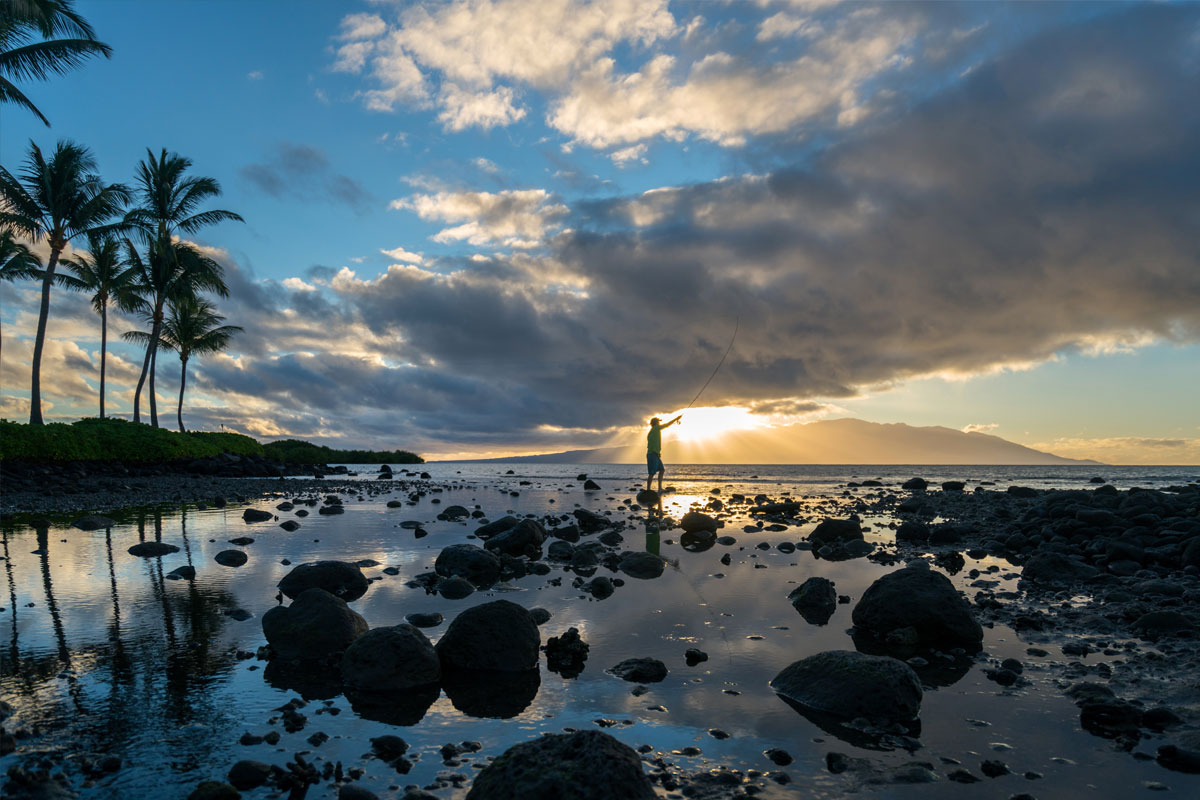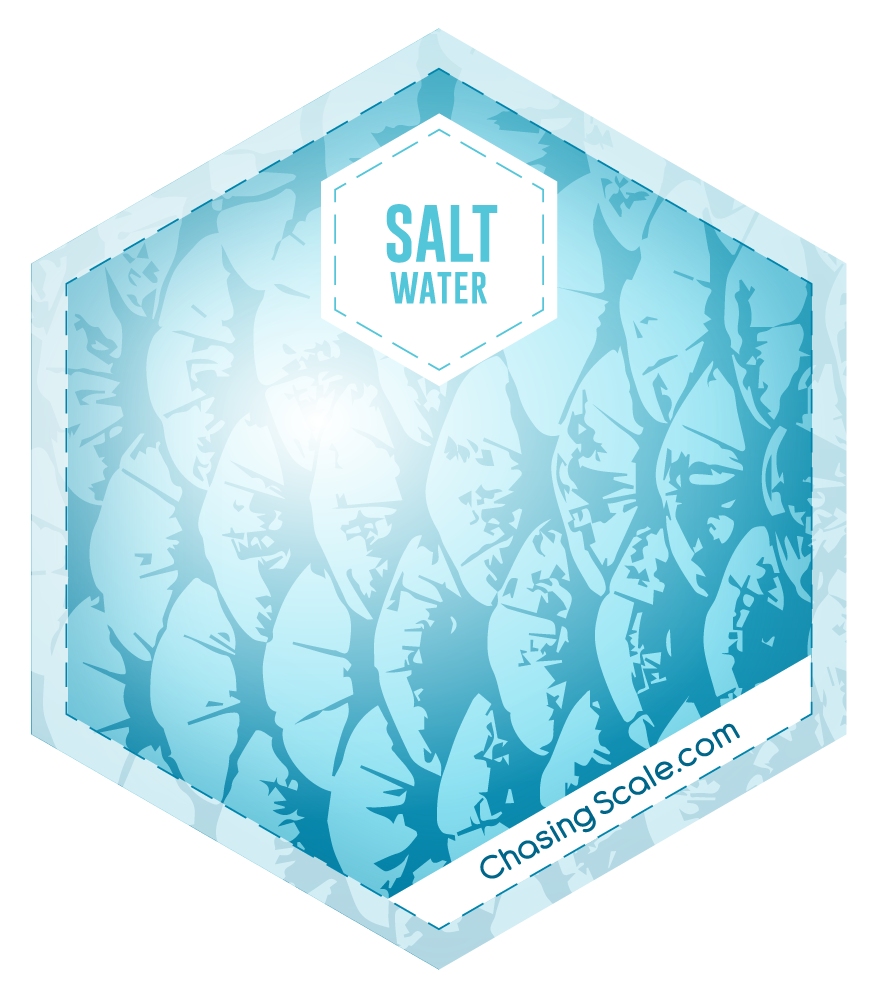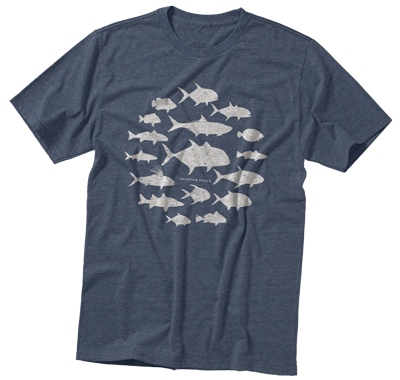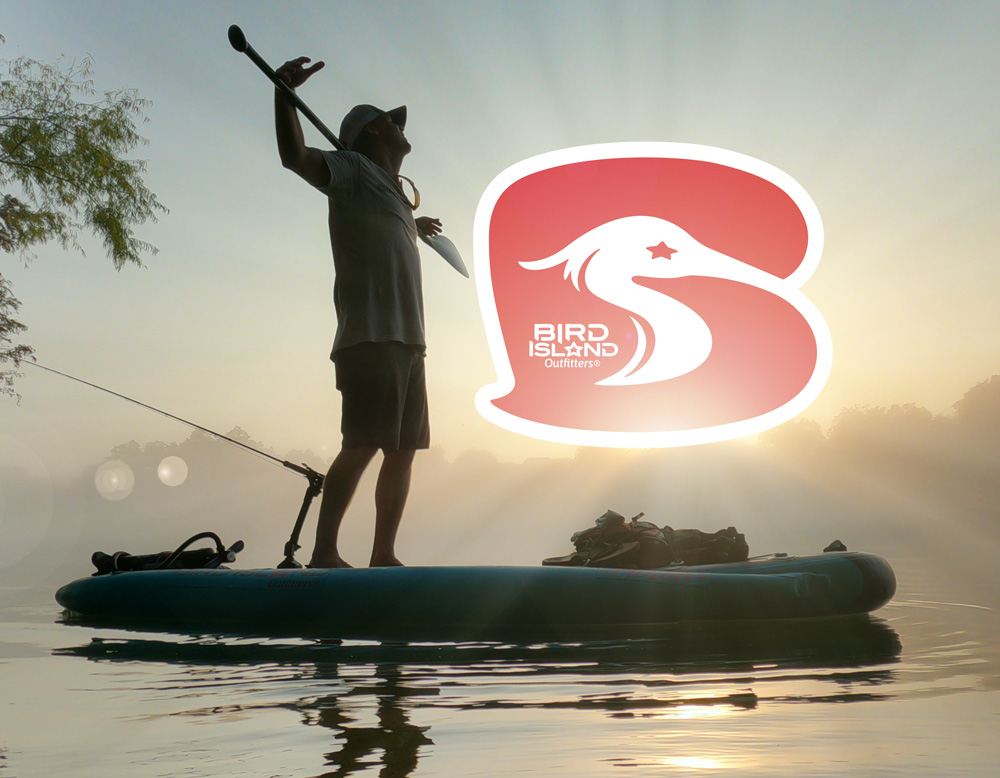Beyond O‘io: The Hawaiian Bonefish
DIY fly fishing adventure molokai hawaii bonefish.
[Read about our recent 2019 trip to Molokai: essays, photos and film]
Chasing Molokai’s monster bonefish.
The water is antique textured glass, soft with hints of imperfection. My gaze is focused and determined. My ears, however, are tuned toward a distant sound—a whoomph, to be more precise. Somewhere beyond the outer reef a humpback whale, all forty tons, relentlessly hammers the surface of the ocean with its 15 foot wide tail. The act of power and aggression is impressive. But, what’s more impressive is that I can hear it from more than 2 miles away! With a fly rod in hand my eyes strain to make out details on the shallow, sandy bottom through the cloudy glare on the water. I’m in search of large moving shadows, flashes of silver and narrow fins breaking the surface. Like a hunter my movements are slow and methodical so as not to spook whatever life might be nearby. My target: the elusive Hawaiian bonefish. It’s day 3 and I’ve yet to see one.
Read About our Recent 2019 Bonefish Trip to Molokai
2,500 miles from the nearest continental landmass, smack-dab in the middle of the largest, deepest ocean on the planet we find ourselves baffled yet in awe. Ryan flew in from Colorado. I simply took a puddle jumper flight over from Maui. Close to home yet a world away, Molokai remains isolated in an ever shrinking world. The flats here are vast and surprisingly intricate. They stretch along the southern shoreline for 28 miles and extend nearly a mile out to sea at some spots. It’s easy to lose oneself in its immensity. Among the sand and coral heads, spotted eagle rays and green sea turtles move about in a gentle rhythm all their own. Here and there we spook schools of papio. These juvenile trevallies commonly take refuge in the nursery-like waters. ‘Omilu are a bit more sparse. Larger versions of papio, they offer a bit of a challenge on the fly. But let’s get down to the nitty gritty. The species we’re here for is the Hawaiian bonefish. Locally known as “o’io”, bonefish generally don’t get much fishing pressure on Molokai. For one: they are difficult to prepare as a meal. Two: there aren’t large populations around the islands as compared to habitats off major continents. Three: They don’t travel in large schools. And, four: they’re tough as nails to hook, let alone land!

Mana (Power)
Upon arriving to Molokai my hopes were sky high. I’d been here many times before but I had never made an entrance quite like this. Whether it was his normal route or a scenic detour, the pilot of the little airplane decided to do a fly-by of the island’s north shore. What I saw was astonishing. It was a jaw-dropping scene. When I set eyes on the Grand Canyon many years ago, it didn’t seem real… more like a painting. Yosemite took my breath away with perfect balance of forest green, deep blue skies and brilliant granite. The Grande Tetons south of Yellowstone threw a duality of power and beauty right in my face with their sharp features and soft lighting, harsh up close yet peaceful from afar. Southeast Alaska’s John’s Hopkins Glacier momentarily found homeostasis among a sea of ice and granite before letting building-sized columns of ice loose from its 250-foot face. Above all the magnificence I’ve seen in this world, it was during that flight that Molokai’s north shore jumped to the front of the line. The sight was ethereal. It was some absurd manifestation of someone’s creative imagination. It seemed to defy physics. I lost track of the waterfalls dropping off of 2,000 to 3,000 foot cliffs of emerald green. Perfect blue skies with soft, white clouds misted in and around the exaggerated, layered contours. The monumental cliffs were divided by luxuriant, seemingly impenetrable valleys that reached deep into the island’s interior. Complete with coconut palms, there were tiny white beaches dotting the terminus of each valley. The powerful Pacific kissed the coastline with its frothy mix of white and deep blue. It was nearly 1,500 years ago when the first humans stepped foot on these islands. What did these ancient Polynesians think as they set eyes on this land for the very first time after months at sea? Fear? Excitement? In that very moment my own thoughts were purely the latter.

Kukakuka (Talk Story)
Let’s talk story. I am anything but an expert on the Molokai of yesteryear. Nor, am I from the islands. However, I pay attention. I listen to kumus, the teachers of the island. I have been fortunate to have bathed in the light of their wisdom. Like the graceful motion of a hula dancer’s hand I’ll softly graze the surface of this bottomless subject. Much of the true Hawaiian history and culture has been obscured on neighbor islands by the twisted mangroves of early missionary teachings, big business and, yes, tourism. Tourism’s footprint is somewhat shallow on Molokai. But, not unlike kona winds (low pressure fronts coming from the southeast), a big and a once bustling agricultural industry has left scars in the form of a huge unemployment rates today. Just west of downtown Kaunakakai is “church row”. It’s a direct reflection of the teachings of Christianity by the missionaries. It was in the late 1800’s when one particular priest named Father Damien de Veuster came to Molokai to help the lepers who were banished and isolated to the Kalaupapa peninsula on Molokai’s north shore. He contracted leprosy himself and died in 1889. Recently, Damien was canonized into sainthood. His memory and spirit lives on today in most island households.
On Molokai the ancient past is the present. It is the future. Traditional ideas reign supreme. The annual Molokai Ka Hula Piko Festival celebrates the island as the birthplace of hula. It commemorates Laka who lived 1,000 years ago and shared the teachings of hula with the people of Molokai and brought the teachings to other Hawaiian islands. Each year during the winter children and adults throughout the islands meet here for Ka Molokai Makahiki to share the ancient cultural tradition of competitive athletic games while paying homage to Lono, the god of peace, fertility and agriculture. Traditionally, the months from October to February was a time set aside for peace. War was kapu (forbidden). In ancient times, ideas of magic and mystery were attached to the island. This aura of power and sorcery kept Molokai removed from its neighbors. Still, to this day, there remains a flicker of this aura throughout the island chain.

Sacred, Not Secret
I visited “Pops” out at the east end, down in Halawa Valley. My visit would not have been complete without sharing a honi and a warm embrace from my good friend. He’d be the first to remind me of Hawaiian protocol and a true welcome to the island. His name is Anakala Pilipo Solatorio. He’s a humble taro farmer… a man in his late 70s. He appears as fit as a man in his 50s. His skin is as tough as the earth he farms. His movements have slowed a bit. His knees aren’t what they once were. His wit, however, is as sharp as ever. He’s a dedicated husband, father and grandfather. His smile is transformative. It shines with “aloha”. His eyes glimmer with mana (power). In the past I’ve seen concern in those eyes, a concern for the future of Halawa Valley. As a spirited kumu (teacher) he wears his passion like the traditional Hawaiian regalia draped over his body and boar’s tusk necklace clasped around his neck. As caretaker, Pilipo’s kuleana (responsibility) is to take care of the land and preserve the culture. To fulfill this responsibility is to share the valley’s past and to share his own history. And with this rich history comes sacred wisdom. Many residents on Molokai prefer to keep this wisdom a secret from the outside world but too many of those secrets have been lost in the last 200 years with the oncoming tsunami of modern times. Maybe there’s a fear that if these ideas are shared, Molokai will loose its mana and will change forever. To me, that’s a legitimate fear. Pops stands tall in his belief that when this wisdom is shared, so too will it be preserved. That’s the only way. With inflection, he holds onto one simple idea: “Sacred. Not secret”. This energy runs through his veins like water through the kalo loi (taro patch). You would never know it from witnessing this simple life and these simple surroundings yet, his message has reached beyond Molokai and well beyond these rocks in the middle of the Pacific. It continues to work its way across oceans. The message finds its way back to these humble surroundings and now lives in the heart of the next generation. His son, Greg, has embraced the calling and has taken on this great kuleana from his father. “Sacred. Not secret”… at least for one more generation.
Halawa translates to “sufficient life”. The valley’s rich cultural history is possibly older than any other location in Hawaii. Pops told me that when he was younger, a group of anthropologists visited the valley looking for early cultural sites. He guided them to a location on the beach and told them to dig. Deep under the sand they uncovered an ancient imu (underground oven). Pilipo said he remembers the women of Halawa going there to cook and talk story every morning while he was growing up. The imu was ultimately carbon dated to 650AD. Other sites in the valley include heiaus (temples), grave yards, a birthing stone and stone walls. At the head of the Valley precipitous cliffs give way to two majestic waterfalls. I’ve sat with Pops many times and have heard story after story. We’ve built a great friendship over the years. He sees me as his hanai (adopted) son. It’s a kuleana that I will forever embrace.

Loko i‘a.
From where I stand, white flats surround me. Mauna Loa to the northwest and Kamakou to the northeast rise in their full glory. The trade winds have increased a little. Nothing to worry about. The tide continues to rise. I can see maybe 10 miles of flats as far as my eyes can strain to reach from east to west. It’s quite humbling to think of the rich history along this shoreline. Hundreds of thousands of Hawaiian fisherman have fished these very same flats with throw nets as their tool. And, here I stand with my modern fly rod hoping to catch and release an ancient resource that has roamed these waters for hundreds of thousands of years. I can’t help the awkward feelings. These shorelines are interlaced with numerous ancient fishponds. Hawaiians built fishponds for aquaculture. From the sea to the mountains, fishponds were an integral component in an ancient Hawaiian division of land use called “ahupua’a”. People in a community such as this had a kuleana to take care of the land in which they lived and worked. Some grew ulu, or bread fruit. Some nurtured loi, or taro ponds. Some hunted pua’a, or pig. Some worked loko i’a, or fishponds. The ponds were built by stacking lava rocks and other stones in the shallows creating a break wall enclosure with openings in one or more places along the wall. It must have been an extremely arduous job as the rocks often came from the mountains. The keepers of the fishponds could control the intake of water and fish, successfully raising schools of fish for later consumption. It was, and still is, an integral part of traditional Hawaii. All resources were traded and shared within the ahupua’a. Simple. Perfect. Take notes modern world.

Hook up.
My mind wandered as I searched the shallows. I remembered earlier this morning. I caught a nice fish. I recall noticing an inconsistency in the underwater topography. It was the edge of a submerged fishpond. I cast a shrimp fly pattern and let it sink. I stripped it in a couple times. Then, something large took it. It was good set. The fish made a run like a bonefish might do. It slowed, gained composure, and then ran again. I was well into the backing on my reel on a couple of the outbursts. After a few runs, the fish tired and allowed me to bring it close. It was a barred trevally. Ryan took a couple photos after which I set the fish free. Of course, with success comes great anticipation. Just then… ahead of me not more than 20 yards… there was movement. Ghostly bodies appeared to move with intention along the bottom. There were three. They were bonefish! And, they were big. I cast my fly just ahead of their noses. A perfect cast. I let it sink and paused. Then I gave a slight tug to the line. Bam! One took the fly and ran! I was as startled as the fish. I let the line go free eventually giving the spinning reel a bit of tension with my left palm which slowed the fish’s progress. With that slightest bit of tension the fish was free from the hook. That was my window. And that window shut abruptly… not to be opened for the remainder of the trip.
Neither one of us caught any bonefish this time around on Molokai. In truth, there was only a smidgen of disappointment. Our time on Molokai was absolutely and unequivocally memorable. In fact, not catching what we came to catch opens up for a return trip. A hui hou Molokai.

……
Many Mahalos:
- Mahalo to Thadd Camara and Molokai Style Borrow A Car. Thanks for the wheels braddah! Couldn’t have covered the island without the red machine.
- Mahalo to Clare Mawae and Molokai Outdoors. Thanks for donating the double kayak. A true exploration of the flats would have been impossible without it.
- Mahalo to Halawa Valley caretakers Pilipo Solatorio and Greg Solatorio. Thanks for your boundless ho’okipa and for sharing your morning and your mana with us in Halawa. If you want to see more on Anakala Pilipo’s story, check out the “Sons of Halawa” movie trailer on MauiNow.com.
- Mahalo to Auntie Snookie for all the wisdom you’ve bestowed to me in the past. Your energy and your passion is timeless.
Story by Brock Munson
Photos by Ryan Bonneau
cofounders • Chasing Scale
Brock is the lead writer at Chasing Scale • brockmunson.com
Ryan Bonneau is the lead photographer at Chasing Scale • ryanbonneauphoto.com









Thoroughly enjoyable and educational. I could almost see the island through the writers words.I am now wanting to visit Molokai ans see for myself!